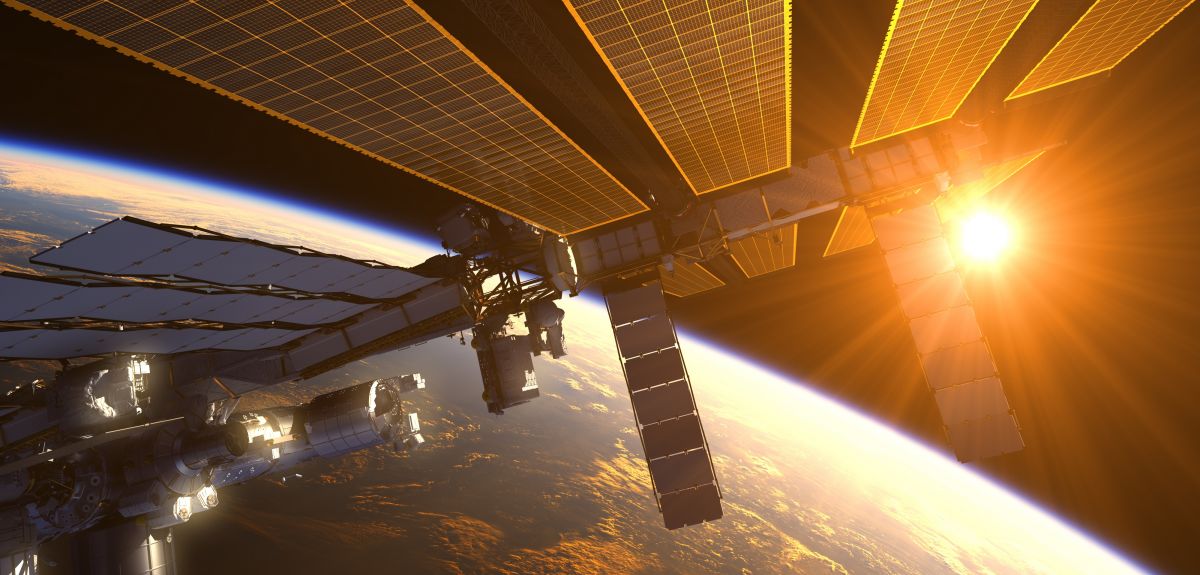
Dual project supports understanding of climate change and astronomy
Scientists from the University of Oxford are to play a key role in new missions that will help to both better monitor the effects of climate change on space and understand the origin of the stars and planets.
A team of researchers from across the country will work together to design a satellite instrument, which will sit on board the International Space Station (ISS). The technology will monitor the complex interaction between the Earth’s upper atmosphere and the climate, and could advance our understanding of earth observations and aeronomy.
The THz sounder TARDiS (Terahertz Atmospheric/ Astrophysics Radiation Detection in Space) will measure the present state of the uppermost atmosphere, and infer links to the future evolution of lower atmospheric climate change. The project will also investigate the fundamental role the interstellar medium plays in the birth and evolution of the stars and planets. The innovative instrument will measure the emitted radiation from oxygen atoms in the upper atmosphere and the interstellar medium using Terahertz remote sensing.
Backed by £75k in study phase funding from the UK Space Agency, the project will run as part of the Human Spaceflight Microgravity Programme, in conjunction with a second International Space Station (ISS) for the renowned astronaut Tim Peake, which is planned for 2020.
The work will be led jointly by Oxford’s Department of Physics and the Science and Technology Facilities Council’s RAL Space, with collaboration from the University of Leeds, University College London, STAR Dundee and Airbus UK.
Dimitra Rigopoulou, the project’s Principal Investigator and Professor of Astrophysics at Oxford University, said: ‘the TARDiS instrument is a pathfinder for two new space missions, the Low Cost Upper Atmosphere Sounder (LOCUS) for Earth Observations and the Far-Infrared Spectroscopic Explorer (FIRSPEX) designed to probe the origins of stars and planets in the Universe. The potential deployment of TARDiS on the ISS is an essential requirement for both of these international space missions as it demonstrates the technological readiness of the projects.’
Dr Jolyon Reburn, Head of the Earth Observation Division at RAL Space, said: ‘The development of TARDiS, based on novel and ground-breaking Terahertz sensing technology, will not only enable us to measure the global distribution of atomic oxygen in the upper atmosphere and to understand how this region affects the climate of Earth, but will also help us better comprehend the process of star formation and the origin of the Universe.
‘This important design study will allow us to refine the instrument payload requirements and specifications for integration with the ISS Bartolomeo platform.’
 New study estimates NHS England spends 3% of its primary and secondary care budget on the health impacts of temperature
New study estimates NHS England spends 3% of its primary and secondary care budget on the health impacts of temperature
 International collaboration launches largest-ever therapeutics trial for patients hospitalised with dengue
International collaboration launches largest-ever therapeutics trial for patients hospitalised with dengue
 Oxford-built multi-agent assistant for cancer care to be piloted in collaboration with Microsoft
Oxford-built multi-agent assistant for cancer care to be piloted in collaboration with Microsoft
 World's first Phase II Nipah virus vaccine trial launch
World's first Phase II Nipah virus vaccine trial launch